Category Archives: Setting up an aquarium
Some History Behind the Hobby
This is topic is one that has always interested me so I thought it would be a fun topic to post here. The below is based in a lot of different books and articles that I have read over the past few years. It’s more of a collection of some of the important milestones that played a big part in developing into the hobby we all enjoy today. I hope I have remembered all of the dates correctly, so here goes…….
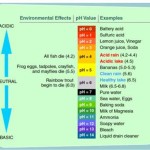
pH in Marine Aquariums
pH (Potential Hydrogen) is simply a way to measure the concentration of hydrogen ions in solution. With a PH of 7.0, water is said to be neutral, anything lower becomes acidic while anything higher is said to become alkaline (basic). The scale used to measure pH is also logarithmic due to the enormous range of hydrogen ions. Using this type of scale, you will see a increase in hydrogen ions by a factor of 10 for each 1.0 difference in the pH values. For example, when you have a PH of 6 there is 10 times as many hydrogen ions as compared to a pH of 7 and 100 times as many ions as compared to a pH of 8.0. This is a good way to illustrate the potential scope of the impact a change in pH can have.
Generally, a pH of 7.9 to 8.4 is considered to be the normal range for a average marine aquarium. I always like to keep my pH stable at a value between 8.0 and 8.3. pH is a very important element of water chemistry to understand and test for, as large and quick swings in your pH can cause stress to fish and corals even resulting in deaths in certain situations. pH is one of the aspects of water quality that can also be an indicator or symptom that something else may be off in your set-up. For that reason I do not recommended trying to adjust your pH with pH stabilizing or adjusting chemicals as you may not be fixing the potential problem(s) but only masking the symptoms. If you are having difficulty maintaining your pH, you should first try to understand the cause of the pH problems and address those causes first. That approach has always worked best for me.
The two biggest factors that commonly affect your pH are:
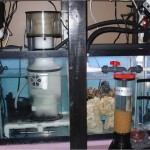
Some Sump Basics
Simply worded, a sump is just a secondary tank that is set-up and linked into a main / display tank as an option for placing equipment as well as providing filtration for the main tank.
If I have learned anything in this hobby it is that there are many many different ways to achieve a healthy and thriving tank. This could not be any truer with how you choose to set up a sump. Likely the best way to approach this topic is to describe the factors that I learned which go into designing your sump and then show you how I set up my sump just as one example. I hope you will find these sump basics helpful.
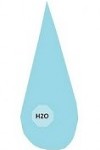
Mixing Saltwater
Mixing saltwater
Perhaps the most vital part of the marine aquarium is properly mixing salt water.
The reefs of the world are the most stable environments on Earth, despite human activity and pollution tipping that balance in the reefs of the Caribbean Sea and the east coast of Florida. The natural reef water possesses a set ratio of salts, minerals and trace elements. Temperatures vary little, and in most reefs, not at all.
Several different manufacturers product synthetic salts that posses the proper ratio of minerals and trace elements, but there are some brands that are superior to others in that respect. Seek out impartial reviews to give you an idea which salt mix to buy.
Natural Sea Water (NSW) contains 11 major elements and a handful of trace elements. To simulate that in our marine tanks one must make every effort to be as close to the natural world as possible.
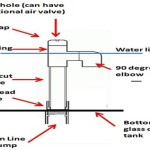
Aquarium Plumbing Basics
When you set out to plumb an aquarium set-up with a sump, the more planning / thought you put into the original set-up, the better it will be in the long run. This is not a very hard thing to do at all, if you focus on the basics and understand them. I tend to think of it in flowing different steps: A) Planning of your flow rates, B) planning the material types and sizes, and C) installation / set-up of the plumbing system. All of what you are about to read below is based on my experiences with various data from some North American manufactures of plumbing products (IPEX, Canplas, and Boshart) which is also detailed in the American Society for Testing and Materials (ASTM) standards.
I will explain what I mean by each step then I will show you examples from one of my reef tanks
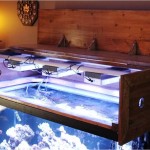
Reef Lighting
This article was written by myself and Cliff. The first part was written by me (Dave66), and Cliff gives an overview of LED (Light Emitting Diode) lighting.
—-
Perhaps the most important and vital piece of equipment one can buy for their reef aquarium is lighting.
Fully 95 percent of corals available in shops and online are photosynthetic. That is, they have photosynthetic bacteria in their tissues (zooxanthellae). The bacteria ‘feed’ on the light, and the sugars they produce as waste feeds the coral.
On the tropical reef it’s the sun that powers the photosynthesis of zooxanthellae. In the aquarium, it is the responsibility of the keeper to simulate the sun in their aquariums. Lighting is one of the major costs in starting a reef tank. Continue reading
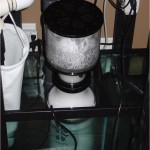
Protein Skimmers
Protein Skimmers
One of the most desirable and in many cases indispensable pieces of marine equipment are Protein Skimmers.
Called foam fractioners among the science folk, skimmers have been available since the early days of the serious marine aquarium hobby.
Benefits of Protein Skimmers are many. First, their purpose is to remove dissolve organics from your tank water before they decay and cause your water quality to decline. Skimmers work by mixing air with the marine water, generating bubbles. The dissolved organics stick to the interface between the bubbles and the water. The bubbles burst at the top of the unit, and the organics fall into a collection cup there.
The skimmer cup fills with what is called the skimmate. The smell of the skimmate will bring great peace of mind that is out of your tank water. Many have to empty the skimmer cup daily, some more lightly stocked reefs every other day.
Emptying involves rinsing the cup out under a running tap, then replacing it on the unit. Also, one should clean the biofilm that forms inside the skimmer every few months, gaging the time based on the amount of biofilm, since it can hamper the skimmer’s filtering capabilities.
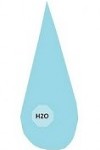
RO/DI units
When putting together this write-up, I used information that I researched / collected from: Perfect Life Water, Water Filters On-line, Rocky Mountain Discus on-line, Watts Canada, and Honeywell Canada along with my personal experience.
First a little history (to skip the history part if you are not interested, just click on “continue reading” below and scroll down to the first diagram)
The osmosis process was first discovered inthe 1700s by a French Scientist whom observed water diffusing spontaneously through a pig bladder. In nature, contaminant which dissolved into water normally exists in the form of ions (commonly referred to as salt). A pig bladder is lined with a membrane that has small enough pore sizes that will not allow the transfer of salt ions, but large enough to still allow the water molecules to pass through. This is used as a separation medium between water having two different concentration of salt. Water will generally transfer from the least concentration side to the higher contamination side as equal concentration will give equal pressure.